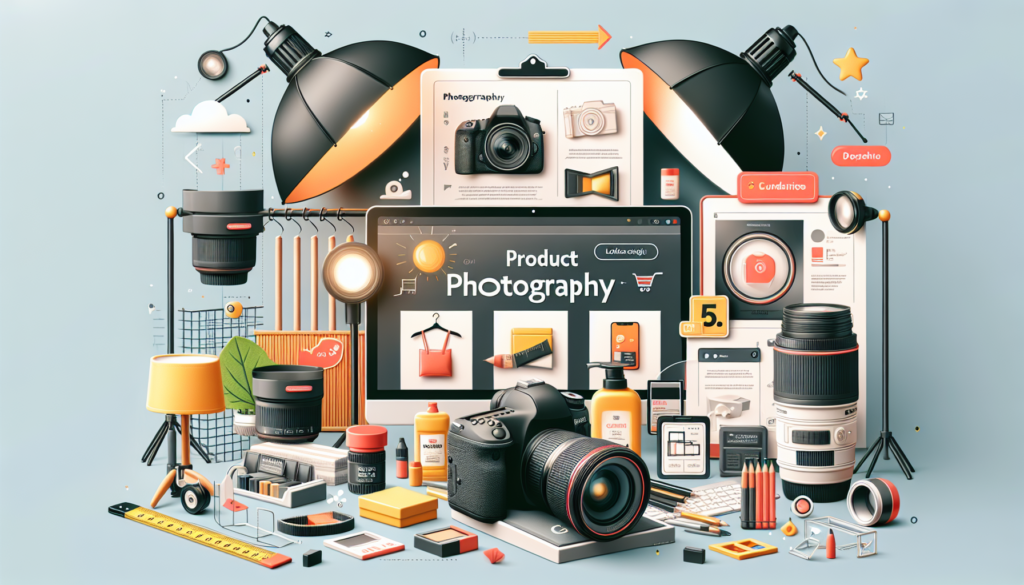Product photography is a fundamental cornerstone in the digital marketing strategy of any online store. Without the ability to interact directly with the product, images become the primary resource to offer customers an experience close to reality. With technological advancements such as augmented reality and deep learning, photographic techniques are reaching new horizons, providing visual richness and interactivity previously unthinkable.
Foundations of Product Photography
Professional Lighting and Composition
At the heart of photographic technique is lighting. The goal is to highlight the product’s features in a way that maximizes its appeal. Controlled light sources help eliminate unwanted reflections and reveal the product’s texture. Composition, on the other hand, must be thoughtfully considered to guide the user’s attention to the most important elements, using rules like the rule of thirds or the Fibonacci spiral to create a harmonious image.
Colorimetry and Digital Editing
When it comes to colorimetry, color fidelity is essential. Properly calibrating monitors and cameras ensures that the colors seen by the user are accurate representations of the product. Advanced digital editing techniques allow for detailed adjustments, from color correction to imperfection cleanup, to multi-layer image composition that offers unparalleled depth.
Technical Advances in Product Photography
High-Resolution Capture and Detail
The latest camera models offer resolutions that exceed 50 megapixels, allowing exceptional sharpness and detail, even for small-sized products. Technologies like predictive autofocus and eye-tracking ensure that even the most important parts of the product are always in perfect focus.
HDR and Extended Dynamic Range
High Dynamic Range (HDR) increases the dynamic range of images, allowing for a more faithful capture of everything from the deepest shadows to the brightest highlights, detailing textures and qualities otherwise lost.
360 Photography and Augmented Reality
Product photography has transcended static images to delve into immersive experiences. 360 photographs, where the user can interact and view the product from all angles, improve the understanding of the object in space. Augmented reality, on the other hand, enables the product to be visualized in the user’s environment, facilitating decision-making and increasing the conversion rate.
Innovative Practical Applications
Case Studies
Fashion Industry
In the fashion world, the combination of virtual runways with 3D models has revolutionized the way collections are presented, allowing customers to visualize garments with astonishing realism.
General E-Commerce
E-commerce giants like Amazon and Alibaba use artificial intelligence analysis to recommend photo framing and styles based on sales performance and visual appeal.
Success Metrics
When evaluating the effectiveness of a product photograph, metrics such as click-through rate (CTR), conversion rate, and time spent on page are considered. Combining these metrics with web behavior analysis and A/B testing allows for refining the visual presentation strategy.
Comparison and Evolution
Compared with traditional photographic techniques, the advanced use of CGI (Computer Generated Images) offers a cost-effective and sustainable alternative. Reducing the need for physical prototypes for photo shoots, along with the ability to make color and texture changes in post-production, positions CGI as a revolutionary tool.
Future Directions
Looking to the future, we embark on the prospect of techniques like plenoptic light capture, which will allow focus adjustments after the shot, and the development of artificial intelligence, which could automate the selection and editing of images based on aesthetic and marketing criteria.
Product photography is heading towards a panorama where customer interaction with hyperrealistic and real-time configurable images will be the norm. The integration of predictive analysis and customization based on user data will outline a scenario where each viewing will be unique and optimally designed for conversion.
With product photography, we are not just selling an object; we are selling a visual experience, a promise of satisfaction, and ultimately, a brand identity. Technical excellence combined with creativity in visual presentation not only captures consumer attention but can also turn a simple act of purchasing into a memorable and enriching user experience.

